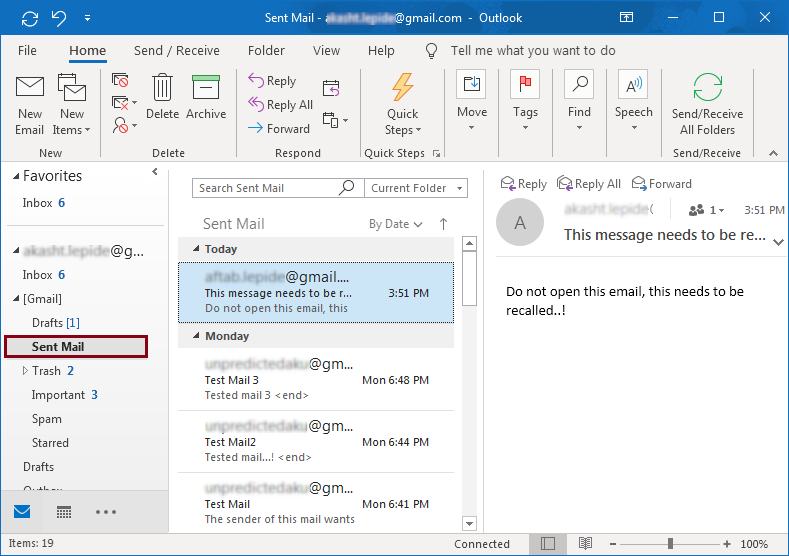


When Cached Exchange Mode is enabled and the recipient is working off-line, the recall process will fail. The recipient must have an active connection with Exchange.When a message is being read via Outlook on the Web (OWA) or via EAS on a smartphone or tablet, the recall will not work. The recipient must also be using Outlook to read his/her emails.In other words When you are using a POP3, IMAP or account or when the recipient is working for another company, you are out of luck already.

The first condition for Recall to work is that you must be using an Exchange account and the recipient must be within that same Exchange organization as well.There are several conditions which must be met for the Recall feature to work: Or set an exception so that messages sent with a high priority won’t be delayed.ĭetailed instructions for setting up such a rule and other delay techniques can be found in the tip Don’t send emails directly. For instance, only delay sending of the message when it is to your boss. Variations of the rule are also possible to fit your needs. You can set it up 120 minutes if you want but that might be less practical. To counter that, you could create a rule which delays sending all messages for 1 or 2 minutes so you have some time to react without seriously slowing down your regular communications. If you’re lucky, it is a big message with a large attachment which takes a while to send so you have some time to pry it out of your Outbox folder.Ĭhances are however that you won’t be that lucky. Most often, you’ll realize that you are making a mistake the moment that you hit that Send button. This way the recipient won’t get a weird technical message which probably only increases the attention to the message you never wanted to sent.īefore getting down to the nitty-gritty of recalling a message in Outlook, let’s take a look at some methods to prevent future mistakes first. Therefor, in most cases, it might be better to simply sent a short but sincere apology message rather than trying to save face the technical route. Yes, in theory you can recall a message but the conditions for it to work are so specific that in praxis it hardly ever works as you want it to. You can set it up 120 minutes if you want but that might be less practical.Instead of forwarding a message to someone else, I accidentally replied to it.Īs this is a bit of an embarrassing mistake, I was wondering if I could “undo” the sending of this message.Ĭan I recall a message and how can I prevent future mistakes? Regarding meeting all these conditions, the site mentions, “Chances are however that you won’t that lucky. Microsoft offers a thorough breakdown of some of the possible scenarios when using recall. The original message must be unread, and the recipient must open the recall notice first, before the original message.Īs you can see, many conditions have to be just right.The original message must have arrived in the Inbox of the recipient, i.e.The recipient also must be using the Outlook desktop app, i.e.Both users are on Exchange within the same organization. You can’t recall messages sent to email addresses outside your organization.Requirements for the recall process to be successful But as mentioned, the conditions have to be right for the recall process to work. Ideally, the recipient of your message will open the recall notice, and the original message will automatically be deleted. Click OK. If you kept the box checked to receive notification if the recall succeeded or failed, you will receive an automated email informing you of the status.and resend the message, click Delete unread copies and replace with a new message. If you want to fix a typo, add an attachment, etc.If you want to recall your message altogether, so it will be deleted from the recipient’s mailbox, click Delete unread copies and replace with a new message.Click the Actions button in the Move section.The video above will walk you through the recall steps in Outlook 2013 or 2016 (this option is not available in the Outlook Web App.): If you’re lucky, the conditions might be right to use the message recall feature in Outlook.

You click “Send” and instantly realize it was a mistake.


 0 kommentar(er)
0 kommentar(er)
